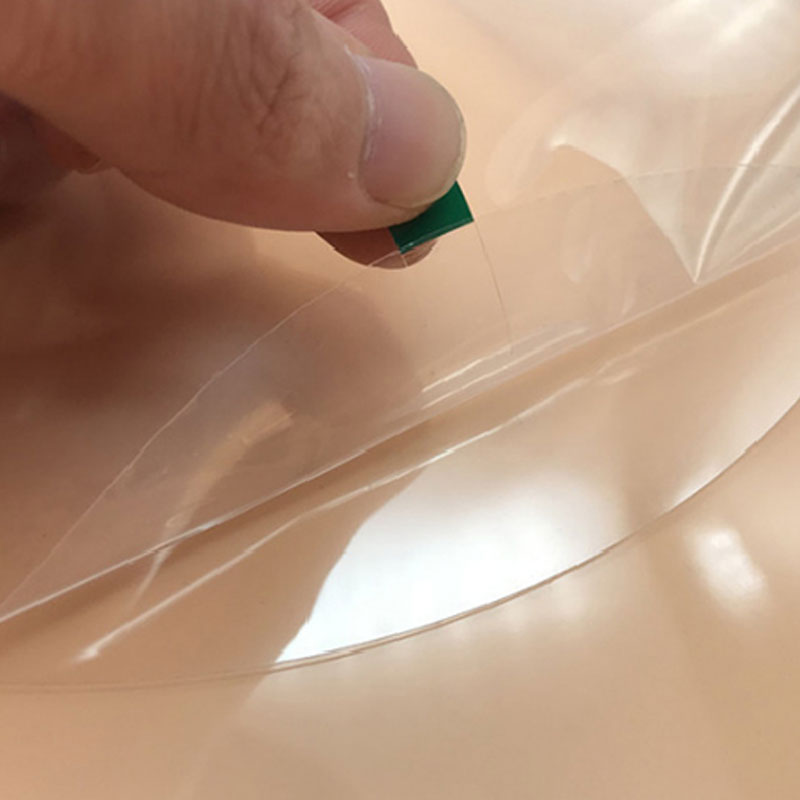Cat:Glue -coated Protective Film
One single flaw is enough to change a “superior” product to “inferior”and thus perfect products need good protection. How you protect your valuable ca...
See Details
Co-extruded self-adhesive protective films are advanced materials used to shield sensitive plastic surfaces from damage during manufacturing, transportation, or storage. The term “co-extrusion” refers to the process in which multiple layers of film are produced simultaneously through a single extrusion process. This allows each layer to be customized for different purposes, such as adhesion strength, surface protection, and cleanliness.
Self-adhesive protective films are commonly used on plastic panels with varying surface finishes. The protective films prevent scratches, dust, and contamination, and can be easily peeled off without leaving residue. Co-extruded self-adhesive films stand out due to their superior customization options and multi-layer technology.
Plastic panels, especially those with glossy or matte finishes, are highly susceptible to damage from external elements. These materials can be easily scratched, dented, or contaminated by dust, dirt, or oils during manufacturing or shipping. Additionally, plastics like acrylic, polycarbonate, and ABS can degrade under UV light exposure, making them even more vulnerable.
Co-extruded films feature multiple layers, each with a specific function. The outer layer often provides UV resistance and physical protection, while the adhesive layer is designed to bond with the plastic without causing damage. The internal layers can be tailored to protect against contamination, ensuring the plastic remains pristine throughout its lifecycle.

One of the key advantages of co-extruded films is their ability to be customized to the specific needs of different plastic types. For example, a film designed for acrylic panels may require a different adhesive strength compared to one made for polycarbonate. By using co-extrusion technology, each layer of the film can be engineered to offer the optimal adhesive strength for a variety of surface finishes and plastic types.
Co-extruded films offer a precise balance between adhesion and cleanliness. The adhesive layer is carefully designed to ensure it sticks well to the plastic without leaving residues or damaging the surface when removed. This is particularly important for plastics that need to maintain their aesthetic appeal, such as high-gloss finishes or transparent panels.
Co-extruded self-adhesive films provide long-lasting protection against scratches, dirt, and oils. The films are engineered to withstand extended exposure to environmental factors, offering continuous protection until the film is removed. Unlike traditional adhesive-coated films, co-extruded versions tend to be more resistant to degradation over time, ensuring the protection stays effective.
Plastic panels exposed to outdoor environments or harsh industrial settings require films that can stand up to challenging conditions. Co-extruded protective films are designed to be resistant to moisture, UV rays, and other environmental factors that could otherwise damage the surface of plastic materials. This makes them ideal for use in automotive, electronics, and construction applications.
The co-extrusion process enables the production of films with precise properties without waste, as each layer is tailored to its specific function. This increases manufacturing efficiency and reduces material costs. Additionally, since co-extruded films offer better protection during transport and storage, manufacturers can reduce the risk of defects and rework, leading to cost savings in the long run.
In many cases, co-extruded self-adhesive films eliminate the need for extensive cleaning or polishing after the film is removed. This reduces the time and resources required for post-processing, leading to lower operational costs and faster turnaround times.
Co-extruded self-adhesive protective films are highly versatile and can be used across a range of industries. In the automotive industry, these films protect plastic components, such as dashboards, trim, and window panels, from scratches and damage. For the electronics industry, they are used to safeguard delicate plastic parts like display screens and housing during production and transport.
Whether you’re working with large plastic panels for building facades or small electronic components, co-extruded self-adhesive films are adaptable. Their ability to conform to different shapes and sizes ensures they are suitable for a variety of applications, from large sheets of plastic to intricate, custom-cut parts.
As environmental concerns continue to rise, the need for sustainable materials in manufacturing has become more important. Co-extruded self-adhesive films can be made from recyclable materials, reducing the overall environmental footprint. Additionally, because these films are more durable, they reduce the need for frequent replacements, further contributing to sustainability efforts.
The co-extrusion process itself is more energy-efficient compared to other film production methods. The ability to simultaneously produce multiple layers reduces energy consumption and manufacturing time, making it a more environmentally friendly option for companies looking to reduce their carbon footprint.
As technology advances, the future of protective films looks promising. Innovations in biodegradable and sustainable materials, along with improved co-extrusion processes, will likely lead to even more efficient and eco-friendly solutions for plastic panel protection. The rise of smart films with additional properties such as self-healing or anti-microbial features could further revolutionize the industry.
| Feature | Co-Extruded Protective Films | Adhesive-Coated Films |
|---|---|---|
| Film Layers | Multiple layers with customized functions | Single-layer film with adhesive coating |
| Adhesion Customization | Can be tailored for various plastic types | Limited to one adhesive strength |
| Durability | Highly resistant to environmental factors (UV, moisture) | Less durable, can degrade over time |
| Residue on Removal | No residue left on plastic surfaces | Possible residue or damage upon removal |
| Application Versatility | Suitable for both large and small panels | Best for general surface protection |
| Environmental Impact | More energy-efficient and recyclable | Often less recyclable, higher waste |